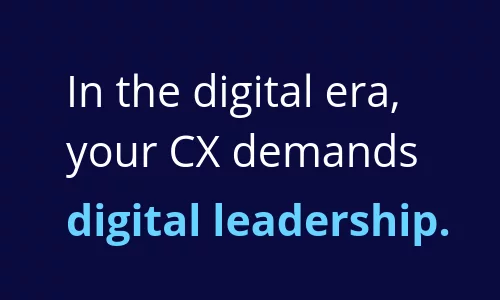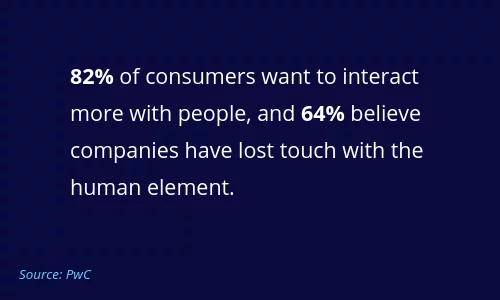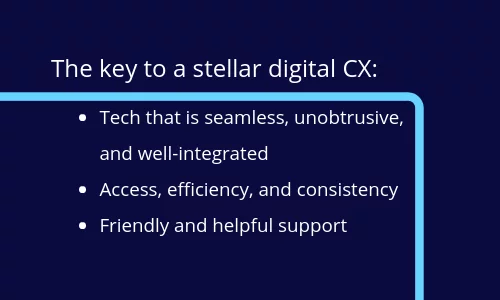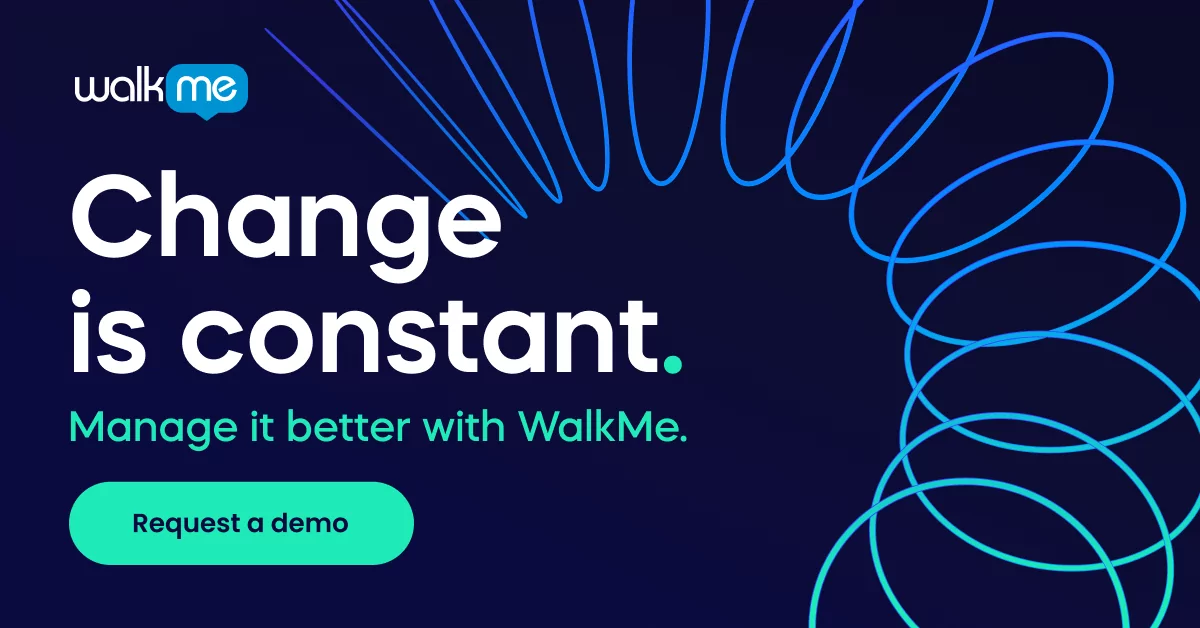In a hypercompetitive business environment, there’s no such thing as a customer experience re-do.
Even if they love your brand or products, 17% of customers will abandon you after just one bad experience. More than half — 59% — will leave after a few.
These findings, from PwC’s CX report, raise an important question: At a time when customer loyalty is more fragile than ever, how can you ensure a consistently positive digital customer experience?
It’s time to invite your CIO to the CX design table
The answer is to tap into your CIO’s expertise through new internal collaborations.
Until now, the corporate CIO had nothing to do with the customer experience. Their main focus was to oversee the development and functionality of the internal IT infrastructure. Designing a solid customer journey fell under the realm of marketing, sales, customer success, and support.
But today, digital software and supporting apps not only shape the customer experience, but they have also become a major distinguishing factor between you and your competitors.
It is now essential for CIOs to take a proactive role in the technology vision, planning, and execution in the customer journey. They are the ones who understand what’s technically possible, what’s required for successful integration, and which features will enhance usability.
If your CIO doesn’t have a seat at the CX table, it will be difficult to create a seamless digital customer experience. And the stakes of that are high — poor usability, software that freezes, and apps riddled with glitches not only frustrate your customers, they drive them away.
Bring your digital vision to life with a DAP. Discover why transformational CIOs turn to WalkMe.
Disruptive technology can disrupt your customer experience
The introduction of advanced digital tools into your customer experience (CX) strategy has the potential to make you stand out against your competition and boost operational efficiency. 
But when it’s not integrated correctly, that same technology can seriously harm your CX. This is where the CIO’s input becomes critical.
As digital tools become more sophisticated, they also become more complicated to embed into the customer journey. Leaving the IT professionals out of the CX dialogue will lead to major consequences in the overall customer experience.
A digital customer experience gone wrong — a common tale of woe
Consider these examples we’ve all experienced.
Say you need to fill a prescription on the phone, but no matter how many times you repeat yourself, the automated responder can’t understand you. You end up driving to the pharmacy to do it in person.
Or imagine you try to use a chatbot to complete a transfer on your bank’s mobile app, but it crashes at the last step. Now you have to call the bank so a teller can do it manually.
In both cases, automation and artificial intelligence create the potential for an efficient and personalized interaction. But as soon as these tools introduce frustration instead of ease, they damage the customer experience and make digital adoption impossible. In such cases, maintaining customer loyalty becomes a major challenge.
The human touch is still the cornerstone of great CX
Despite advances in technology, 82% of American consumers say they’d like more interactions with real people, according to the PwC report. 
Consumers are so dissatisfied with the current state of customer service that 64% believe companies have completely lost touch with the human element of the customer experience.
CIOs must help determine how to reconcile the need to digitally transform with customers’ desires for more person-to-person interactions. By bringing their technical expertise to the table, they can provide input on which digital tools will add value to the customer journey, and which will interfere with the human element.
Your technology only damages the CX when it doesn’t work
These findings might seem at odds with your goals to expand your digital arsenal, but they aren’t.
According to the same PwC report, nearly 80% of American consumers say speed, convenience, and knowledgeable and friendly service are the most important aspects of CX.
Advanced digital tools like AI, automation, and machine learning give you the potential to fulfill all of these desires. When your technology works smoothly, your staff can concentrate on providing better service.
High-tech wins when it’s highly functional
Even though the majority of consumers say they prefer human interactions, we know they still enjoy the benefits of a digital customer experience, so long as it fulfills their demands for access and efficiency.
Take Amazon Prime for example. This offering is a huge success because shoppers can access an endless supply of products, receive personalized recommendations, and even get same-day shipping on many items. And, I’d like to point out, this effortless shopping experience involves zero human interaction.
If your digital offerings consistently provide a convenient and pleasant experience, you’re positioned to provide a stellar customer experience and boost loyalty.
The modern customer has high standards and low patience
Ignoring consumers’ demands for human interactions in the customer experience will stunt your ability to fulfill the full range of their desires. The perfect CX includes a careful blend of technology and people. 
But the need for a robust digital offering in your CX strategy cannot be understated. In the digital era, competition is higher than ever before. The digital capabilities that guide your customer journey have become the main distinguishing factor in the eyes of your customers.
The more consumers interact with brands with digital customer experiences, the faster they get used to their benefits.
For example, I don’t remember the last time I drove to an unfamiliar destination without using Waze. I’m always sure to download a few episodes of a TV show on Netflix before a long flight.
I know I can rely on these platforms for a consistent, high-quality experience. They are so ingrained in my life — whether for pragmatism or entertainment — that using them has become second nature. They run on advanced digital capabilities, but I love them because they are seamless, unobtrusive, and most importantly, they give me what I’m asking for.
If your new tech is clunky, slow, or full of glitches, your customers will instantly become frustrated, change their perception of your brand, and even leave in favor of your competitor.
In your pursuit of the ultimate customer experience, the technology you choose must be reliable and provide real value to your customers. No one is more equipped to weigh into this decision than your CIO.


